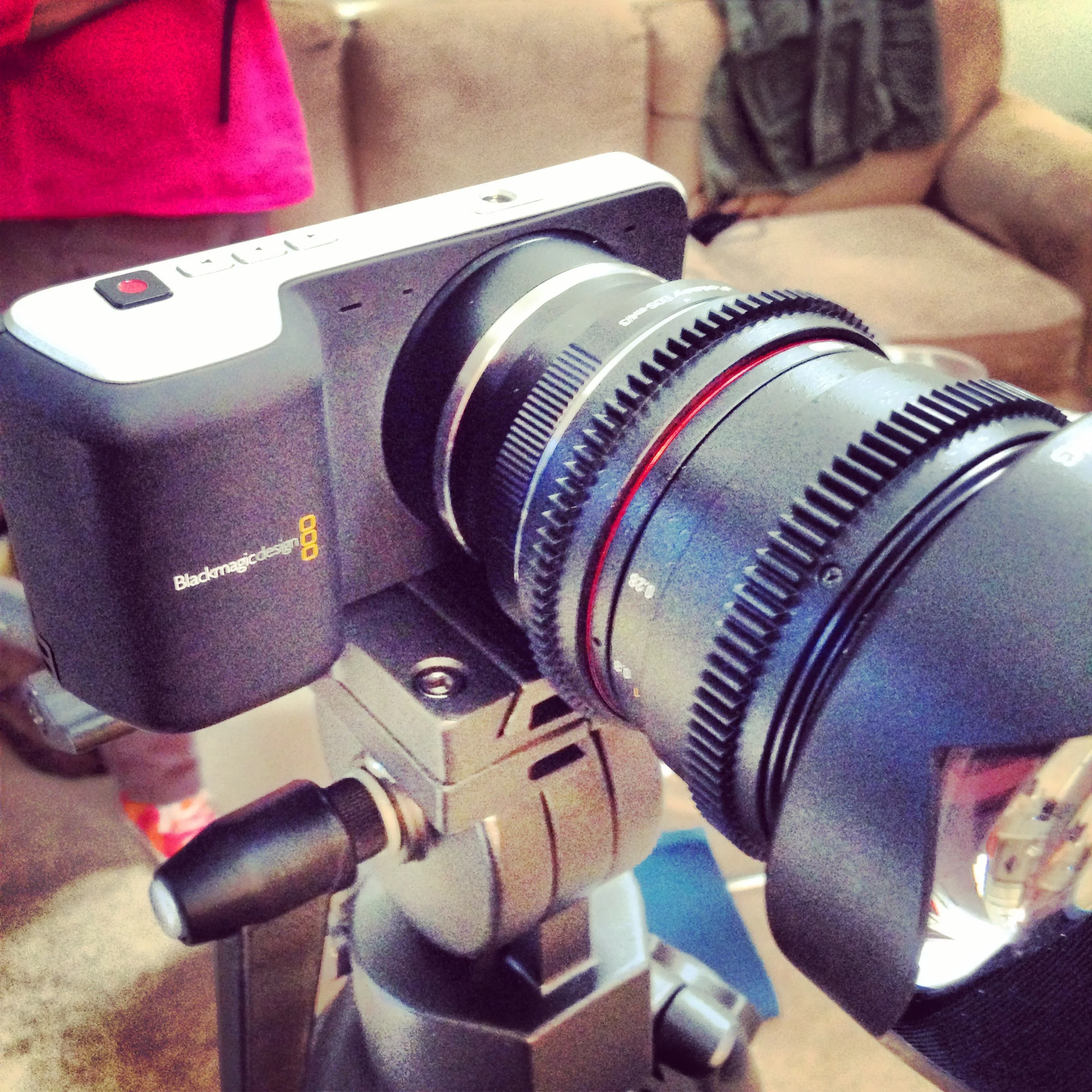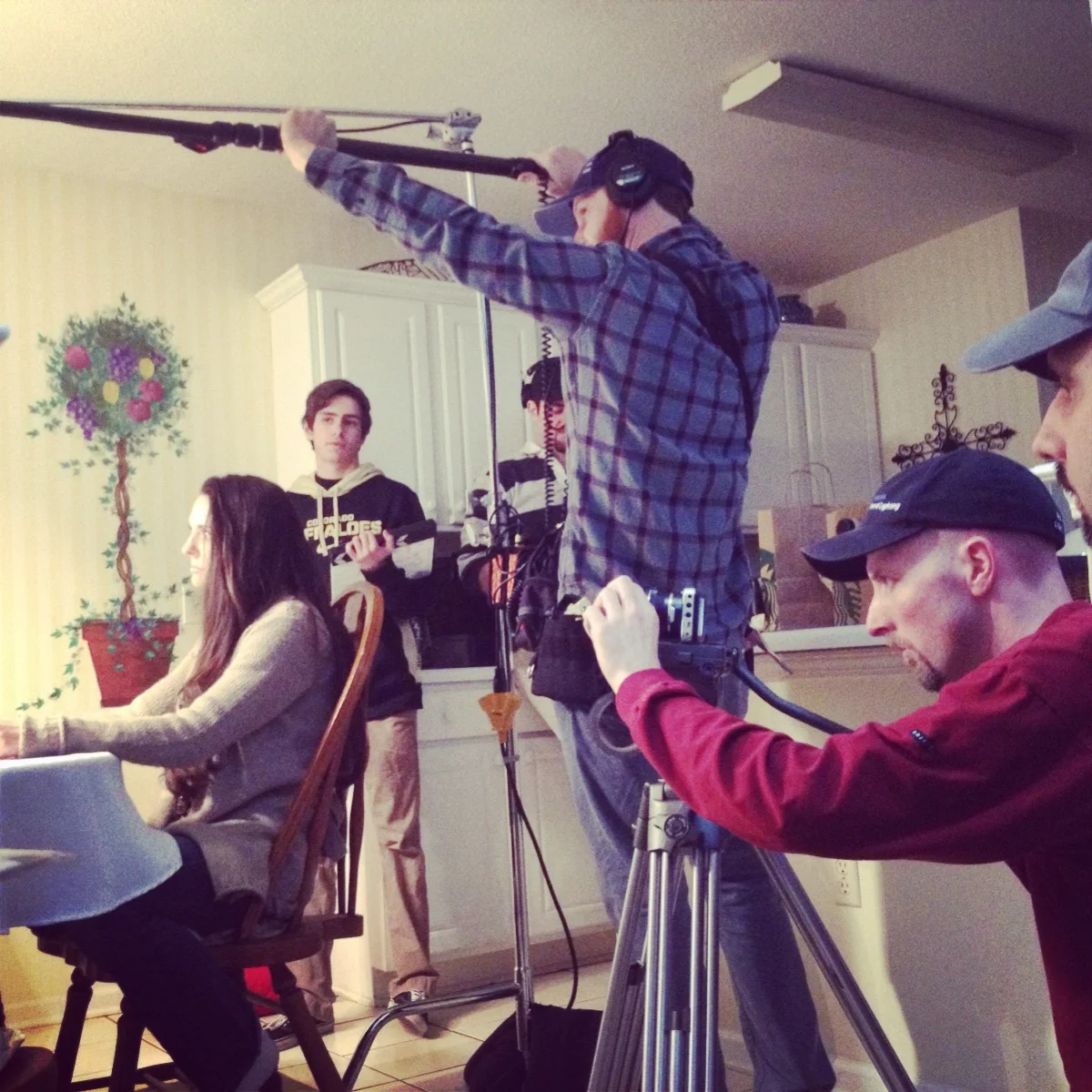Observations: Blackmagic Pocket Cinema Camera
I had my first hands-on experience with the Blackmagic Pocket Cinema Camera over the weekend while working as DP for a short film. Here are a few of my observations and some general tips:
The camera is incredibly compact. I couldn't believe a camera that size could shoot RAW and come with a price point of under $1,000. The Pocket Cinema camera would be perfect for documentary projects where the filmmakers need to move quickly, remain inconspicuous, and get into some tight spaces.
Get a FAST SD card, and have a LOT of them with you on set. Blackmagic recommends using SanDisk Extreme Pro cards, which write at 95 mb/s. Even shooting in ProRes, a 64GB card will net you approximately 37 minutes of recording time.
Speaking of things you need a lot of - batteries. I've never seen a camera burn through a battery as fast as this camera does. During my shoot over the weekend, I would have the camera turned on in order to frame up and light a particular shot. However, I would power down as much as possible (I had read earlier about the amount of power the camera uses). Even though I turned the camera off as much as possible, the battery would drain from roughly 97% down to 60% or lower before the director yelled "action" on the first take. Fortunately, we had five batteries and two chargers on set.
There is no way to reformat the cards in-camera, which I find odd. You will need to have a card reader and laptop on set to ingest footage and reformat cards in the field. If you have enough SD cards with you on location, having to reformat won't be an issue.
There is also no way to tell how much recording time is left on a card as you shoot. The timecode display on the LCD only displays the duration of the current clip you are recording, not the cumulative total. However, when space is running low, the display will start to flash "Card Full." This warning is a bit misleading, because the card isn't actually full at that point. It just means that space is running low; the camera just doesn't tell you how low.
The dynamic range of this camera is incredible, but be prepared; the image looks super flat in-camera, and there's almost no saturation (You would have to try very hard to crush out your blacks and blow your highlights with this camera). I recommend a good external field monitor, preferably one with a LUT (Look Up Table), so you and the crew can get a better idea of how the image will look when color correction is applied. The built-in LCD on the back of the camera helps somewhat with this. Simply switch the Display from "Film" to "Video" and you will get a better idea of how the final picture will look. I found myself using the "Video" display mode throughout the weekend, just to gauge the contrast of my lighting set ups a little better.
Since the image is very low contrast, it's more challenging to "eye-ball" proper exposure. Granted, it's very hard to under- or overexpose the image with this camera, but you never want to take the chance. Turning zebras on will help, but a handheld light meter is a valuable tool with this camera.
In order to use an external monitor with the Pocket Cinema Camera, you will need a micro HDMI with a Type D connector.
If you aren't using an external monitor, I recommend using the focus peaking feature. By double clicking the Focus button to the right of the LCD, green lines will appear around the borders of every object that is in focus. This is extremely helpful.
The camera menus are simple. You don't have to drill way down into sub menus to adjust different camera picture profiles, or change display information, or create custom user functions. Everything about the menus on this camera is bare bones and basic. Set your ISO, Kelvin temp, Shutter angle, Record Mode (ProRes or RAW) and Dynamic Range Mode (Film or Video) and you're pretty much set.
The Super 16 sensor is smaller than DSLR sensors, so you will have deeper depth of field and lower sensitivity to light. The deeper depth of field actually was very helpful to me in my shoot over the weekend. We had two important dolly shots and it was easier for me to keep everything in focus as the camera pulled back away from the action. And I didn't have to blast the scene with light and stop down to f8.0 to pull it off. I was able to use minimal lighting and shoot at f4.5 at ISO 800. I was pleasantly surprised that I didn't have to pull focus as much as I thought I would.
The last observation I have for now is that the Super 16 sensor has a 2x crop factor, meaning that a 14mm prime (35mm equivalent), will be a 28mm prime. This is something to consider when setting up your shots, especially in tight spaces.
I really enjoyed my time with the Blackmagic Pocket Cinema Camera and look forward to using it again. Hopefully these observations and tips will be helpful to you as you decide which camera to use on your next project.



